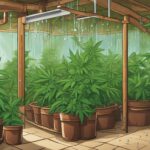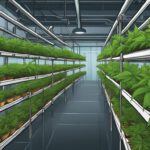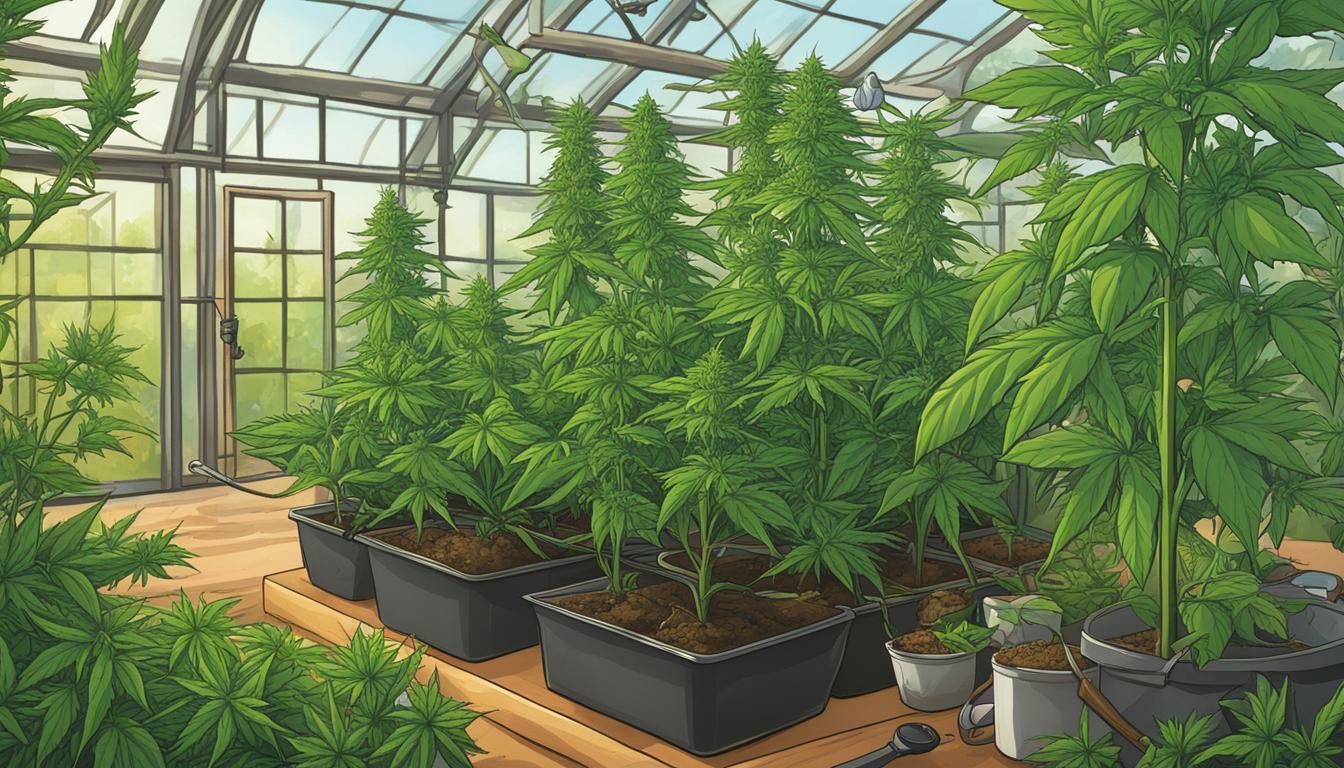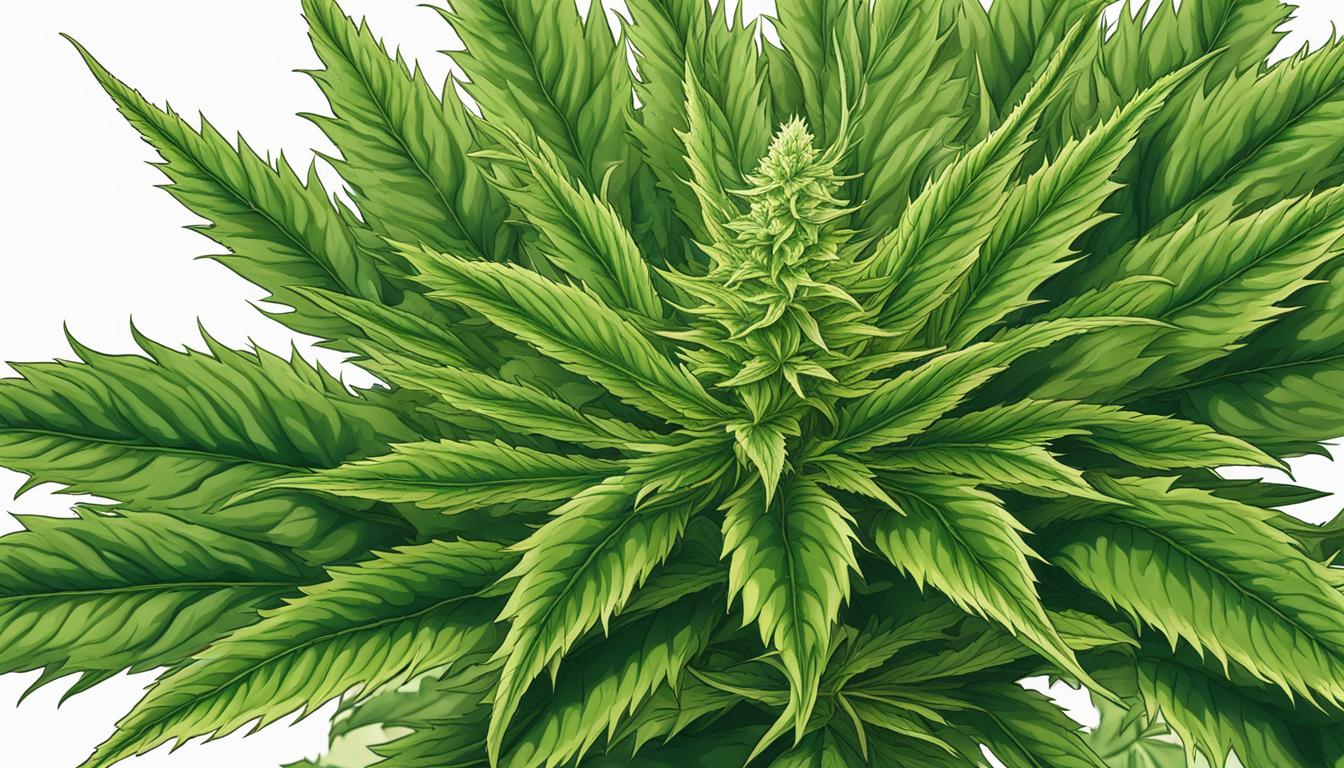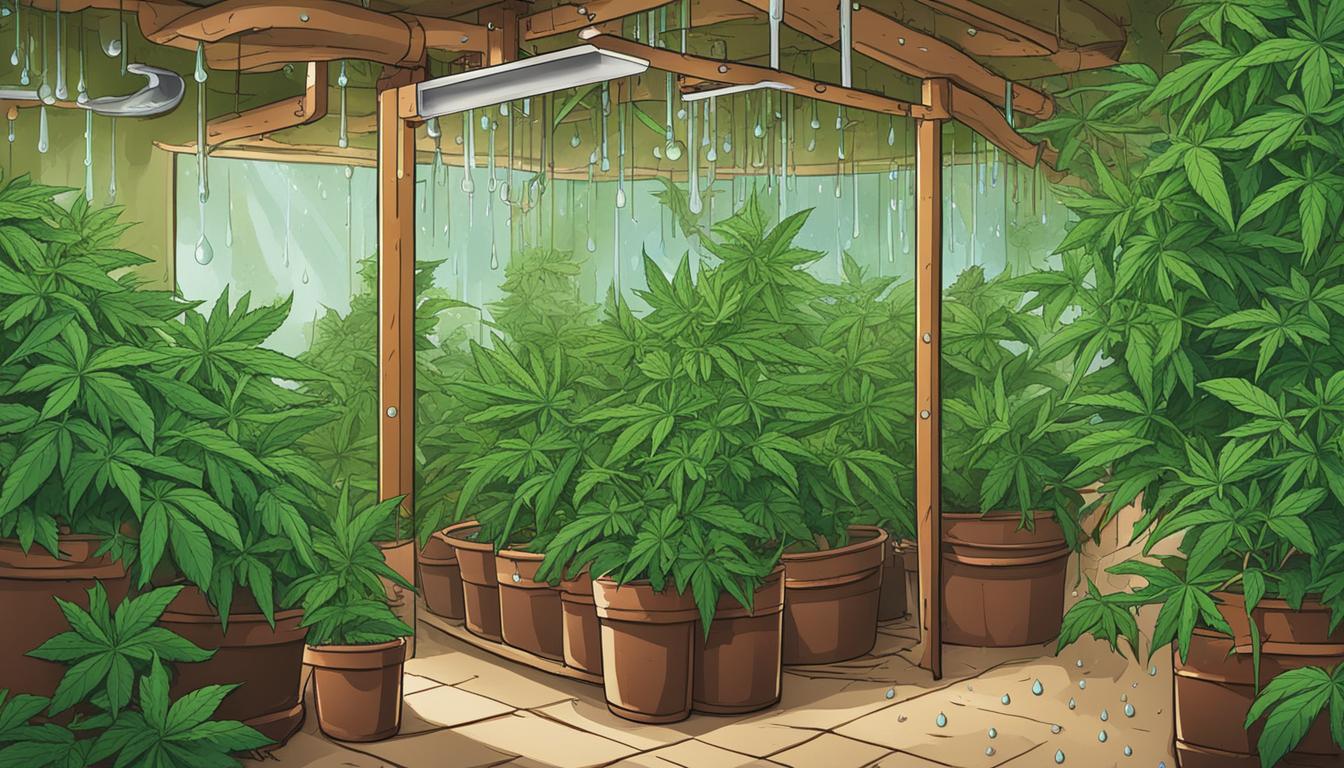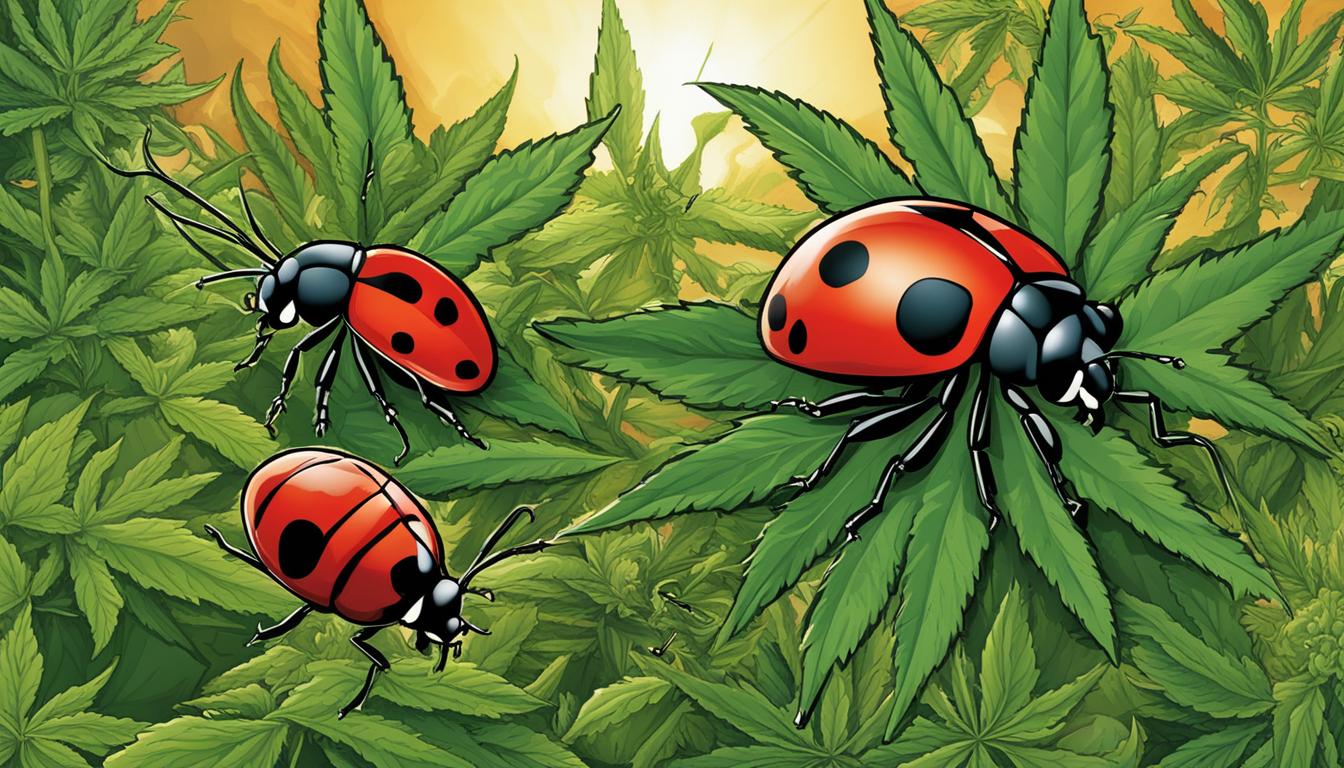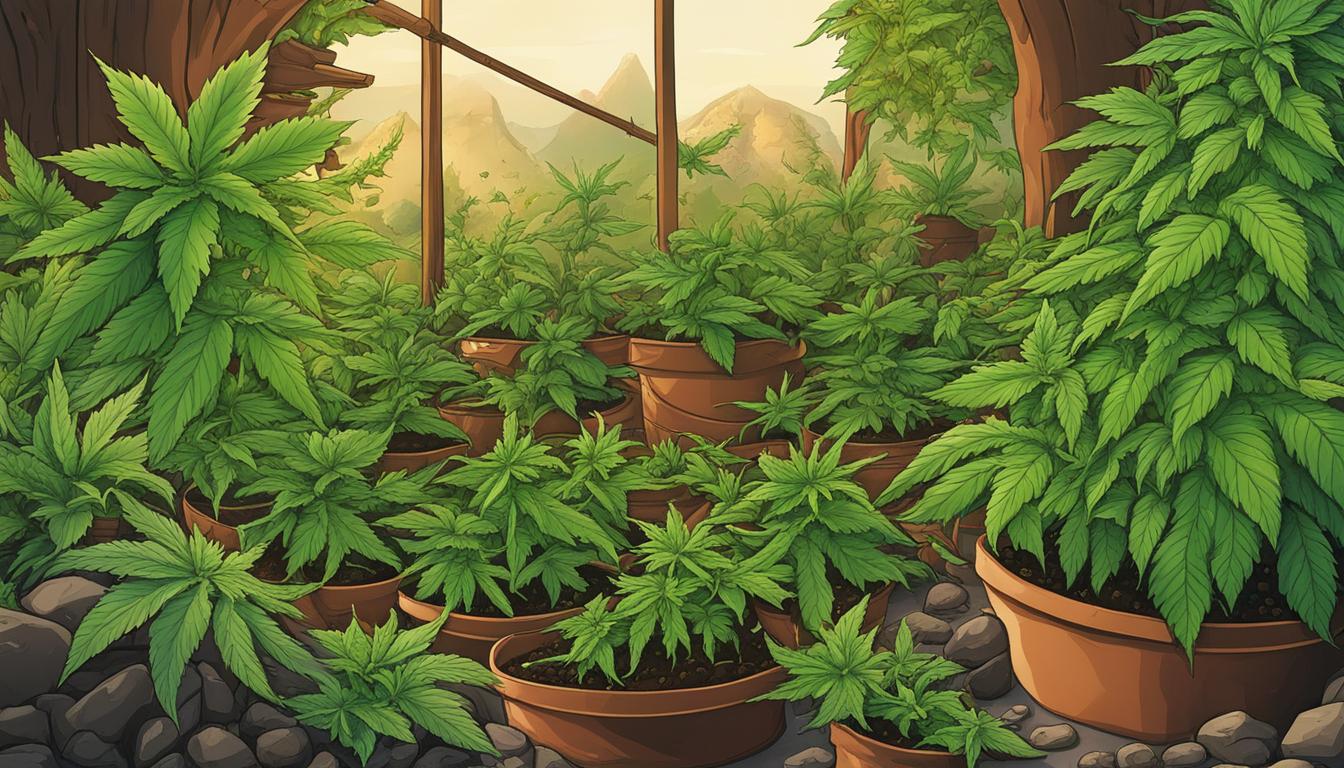Welcome to the world of cannabis cultivation! Whether you’re a seasoned gardener or a complete beginner, cultivating cannabis at home is a fun and rewarding experience. With the right tools, techniques, and a little bit of patience, you can grow your own high-quality cannabis without ever leaving your house.
In this beginner’s guide to cannabis cultivation, we’ll cover everything you need to know to get started. From selecting the right strain to understanding light and temperature requirements, we’ll walk you through each step of the process. With our easy-to-follow instructions and helpful tips, you’ll be well on your way to growing your own cannabis in no time.
Key Takeaways:
- Cannabis cultivation can be a fun and rewarding experience for beginners.
- Choosing the right strain is important for successful cultivation.
- Understanding light and temperature requirements is crucial to healthy growth.
- Investing in essential tools, such as grow lights and pH meters, can help ensure successful cultivation.
- Patient and dedication are key to a successful cultivation process.
Understanding the Basics of Cannabis Cultivation
Whether you’re a seasoned gardener or new to cultivating plants, growing marijuana requires specific techniques and knowledge to ensure healthy growth and maximum yields. In this section, we will guide you through the essential steps to successfully grow your own cannabis plants.
Selecting the Right Strain
Choosing the right strain is essential for successful cannabis cultivation. Some strains are better suited for indoor growing, while others thrive in outdoor environments. Consider the plant’s size, growth rate, and potential yield when selecting your strain. Sativa strains tend to grow taller, while Indica strains are more compact.
Providing Optimal Light and Temperature
Light and temperature are critical factors in cannabis cultivation. Marijuana plants require at least 12 hours of light per day during the vegetative stage and 12 hours of darkness during the flowering stage. Investing in quality grow lights is essential for indoor cultivation, as natural sunlight may not be sufficient. Temperature and humidity levels should also be monitored and adjusted as necessary for optimal growth.
Nutrition and Watering
Providing proper nutrition and watering to your cannabis plants is crucial for healthy growth. Use nutrient-rich soil and choose a suitable fertilizer to provide your plants with essential nutrients. Water your plants regularly, but be careful not to overwater, as this can lead to root rot.
Training and Pruning
Training and pruning your plants can help promote healthy growth and maximize yields. Techniques such as topping, bending, and pruning can help control the plant’s shape and encourage the growth of multiple colas. Use caution when pruning and avoid cutting too much foliage, as this can damage the plant and reduce yields.
Harvesting and Drying
Knowing when to harvest your cannabis plants is essential for achieving maximum potency and flavor. Harvest when the trichomes are mostly cloudy, and the pistils have turned brown. Once harvested, hang your plants upside down to dry in a cool, dark room. After drying for a few days, the buds can be cured by placing them in a sealed jar, which helps to enhance their flavor and aroma.
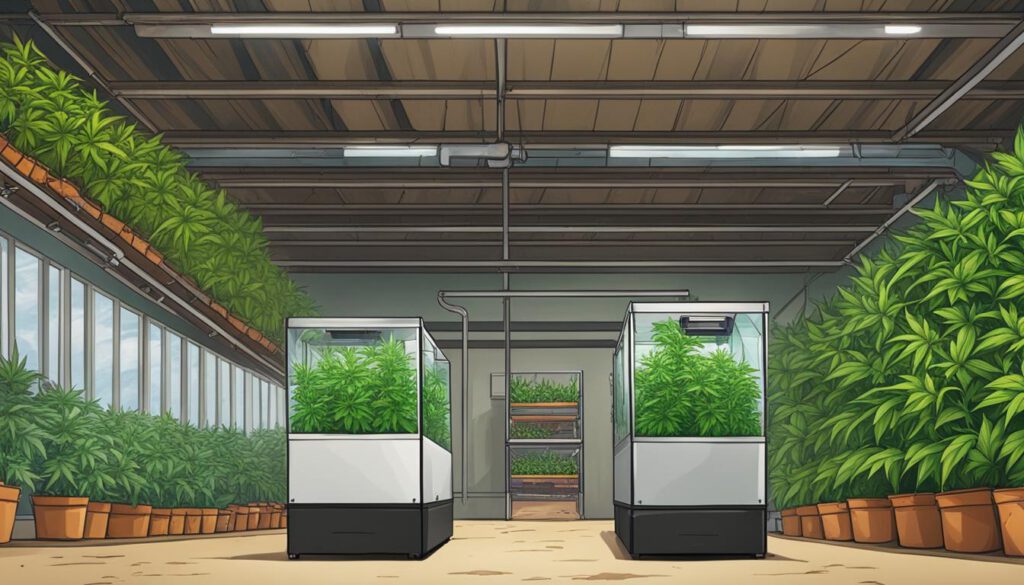
Ultimately, the choice between indoor and outdoor cultivation comes down to your personal preferences, budget, and growing goals. Consider factors such as convenience, cost, control, and environmental impact when making your decision. Regardless of which method you choose, with proper care and attention, you can cultivate healthy and high-quality cannabis plants at home.
Step-by-Step Guide to Cannabis Cultivation
Now that you have a basic understanding of cannabis cultivation and have prepared your supplies and space, it’s time to get started on the actual growing process. Follow these steps for a successful homegrown cannabis harvest:
- Germination: Start by germinating your seeds using one of the methods discussed earlier. Make sure your seeds are healthy and have plenty of moisture.
- Seedling Phase: Once your seeds have sprouted, transfer them to their final container. Make sure to use high-quality soil with the right balance of nutrients and optimal pH levels. During this phase, the seedlings are still fragile, so it’s essential to provide them with the right amount of light and humidity. For indoor cultivation, use LED grow lights to control the light cycle, which will be 16-18 hours of light a day. For outdoor growing, choose a spot with ample natural light and a sheltered environment.
- Vegging Phase: During vegging, your plants will start to grow leaves and branches. Make sure to maintain the optimal temperature, humidity, and light cycle. At this stage, your plants will need more nutrients, so feed them with high-nitrogen fertilizers. Keep the soil moist but not too wet to prevent mold from developing. Train your plants by topping, pruning, and using other techniques to encourage the development of more branches and buds.
- Flowering Phase: During the flowering phase, your plants will start to produce buds. Adjust the light cycle to 12 hours of light and 12 hours of dark to trigger the flowering cycle. Provide adequate nutrients, including phosphorus and potassium. Monitor your plants regularly for signs of pests, such as spider mites and aphids. Use organic pesticides or natural predators to control the infestation.
- Harvesting: When your plants have reached the end of their flowering cycle, it’s time to harvest. Look for signs of maturity, such as brown pistils and trichomes with a milky or amber color. Cut the buds from the branches and hang them up to dry in a dark, dry, and well-ventilated space. Once the buds are dry, trim them off the branches and store in airtight containers in a cool, dark, and dry place.
By following these steps, you can grow high-quality cannabis at home. Remember to monitor your plants regularly and adjust their growing conditions as needed. With patience, dedication, and a little bit of knowledge, you can enjoy the fruits of your labor in no time.
Conclusion
Congratulations on completing this beginner’s guide to cannabis cultivation! By now, you should have a solid understanding of the basics of growing cannabis at home. However, before you dive in, it’s important to invest in the essential tools for cannabis cultivation.
The Essential Tools for Cannabis Cultivation
Firstly, you’ll need the right lighting for your plants. Invest in high-quality grow lights that provide the necessary spectrum and intensity of light for healthy growth. Secondly, maintaining the correct pH level is crucial to your plant’s overall health. pH meters allow you to measure the pH level of your soil or hydroponic solution, enabling you to make adjustments as necessary. Thirdly, quality soil is essential. Look for soil with a good nutrient balance and proper drainage to promote healthy root growth.
Other essential tools include fans to circulate air, nutrients for healthy growth, and pruning shears for maintaining the shape of your plants. By investing in these essential tools, you’ll be setting yourself up for successful cannabis cultivation.
Remember, growing cannabis at home takes patience, dedication, and attention to detail. With the information provided in this guide and the right tools, you’ll be on your way to enjoying the rewards of your own cultivated cannabis. Happy growing!
FAQ
What are the essential tools for cannabis cultivation?
Essential tools for cannabis cultivation include grow lights, pH meters, quality soil, pots or containers, fans for ventilation, and nutrient solutions.
How do I select the right strain of cannabis for cultivation?
When selecting a strain, consider factors such as desired effects, growing difficulty, space availability, and climate suitability. Research different strains and choose one that aligns with your preferences and growing conditions.
What are the light and temperature requirements for growing cannabis?
Cannabis plants require around 12-14 hours of light per day during the vegetative stage and 8-12 hours of uninterrupted darkness during the flowering stage. The ideal temperature range for cannabis cultivation is between 70-85°F (21-29°C) during the day and 60-70°F (15-21°C) at night.
How often should I provide nutrition to my cannabis plants?
Cannabis plants require nutrients throughout their lifecycle. During the vegetative stage, feed them with a balanced nutrient solution every 1-2 weeks. In the flowering stage, switch to a bloom-specific nutrient solution and feed them every 1-2 weeks until harvest.
What are the advantages and disadvantages of indoor and outdoor cannabis cultivation?
Indoor cultivation allows for year-round control over environmental factors, security, and privacy, but requires an initial investment in equipment and higher energy consumption. Outdoor cultivation takes advantage of natural sunlight, requires less equipment, and can yield larger plants, but is limited by seasonal changes, climate, and potential security risks.
How long does it take to grow cannabis from seed to harvest?
The time it takes to grow cannabis from seed to harvest varies depending on the strain and growing conditions. Generally, it takes approximately 8-12 weeks for the flowering stage, preceded by 4-8 weeks of vegetative growth. Some strains may have longer or shorter growth cycles.


